We were settled in the Hotel Le Blason de Provence in Monteux for the next two nights. It was time to explore the surrounding area and we decided to start with L’Isle Sur La Sorgue which is listed among ‘Les plus beau villages de France’ and only a 20 minute drive south.
Vanya was suffering with her hip and so, having parked the Van at the edge of L’Isle Sur La Sorgue on the Route de Cavaillon, I left her to rest for a while and set off alone to explore the town. Within 10 minutes I had reached the River Sorgue which marks the southern edge of the old town. I need only have crossed the bridge in front of me and followed the Rue Carnot to reach the town centre but I fancied following the river around the town first.
The River Sorgue is for the most part a shallow meandering river which completely encircles the old town and it is this surrounding ring of water, together with it’s canals and tributaries, that have caused L’Isle sur la Sorgue to be called the Venice of Provence. I think that excessive but the many waterways and numerous footbridges do lend the place a priceless charm. The river water is crystal clear and there are a couple of wonderful looking bathing areas towards the edge of the town although you’ll not catch me using them. The water is a constant 55 degrees, being the temperature at which it surges from it’s spring in nearby Fontaine de Vaucluse. That’s a little cold for me!
Passing one of the town’s 60+ waterwheels on the way, I followed the river as it ran parallel with the Avenue de la Liberation towards the Monument Alphonse Benoit. Benoit was a local businessman and philanthropist who lived in the town during the period 1809 – 1872. Cross the river from the Avenue de la Liberation and you’re on the Quai Rouget de L’Isle and this too leads to the Monument Alphonse Benoit.
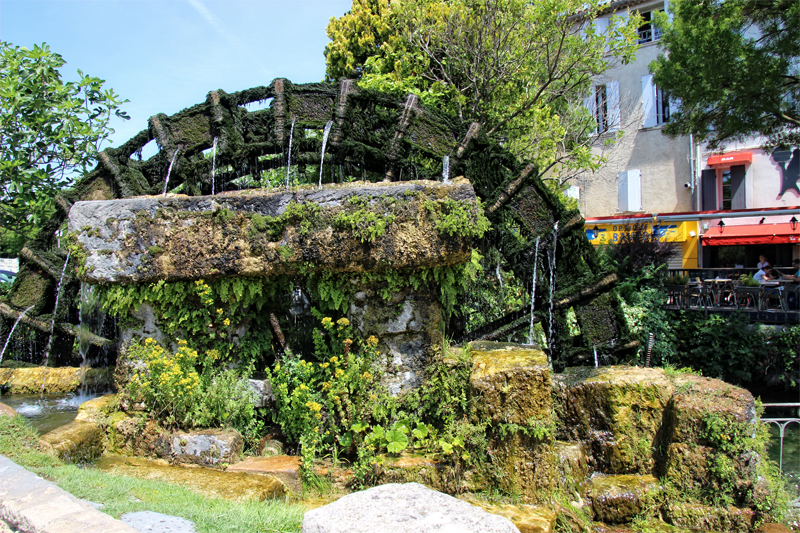

At the Monument turn left and you’re on the Quai Jean Jaures. This is arguably the prettiest and most photographed part of the town although the far end of this quai (where it meets the Quai Frederic Mistral) runs it a close second. There’s no denying L’Isle Sur La Sorgue attracts a high number of tourists and the Quai Jean Jaures is a tourist hotspot but it is a gem of a place and well worth visiting.
Both the Quai Rouget de l’Isle and Quai Jean Jaures are lined with waterside cafes and restaurants and an array of interesting and unusual shops, many of them antique shops. Indeed, the town is brimming with hundreds of antique shops and/or dealers in second hand goods and, if that isn’t enough, the town holds an ‘International Antiques Fair’ twice a year (Easter and the end of August) which attract more than 500 stalls. It is said that, after Paris, L’Isle de la Sorgue is the largest antique centre in France and I wouldn’t argue that point.

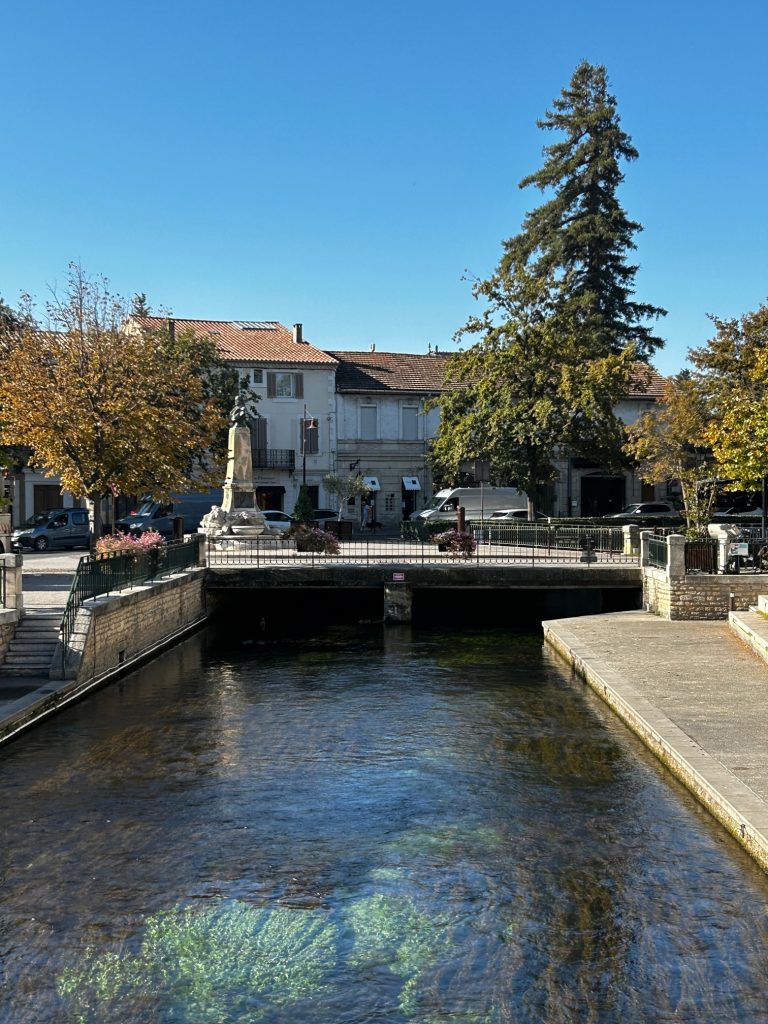
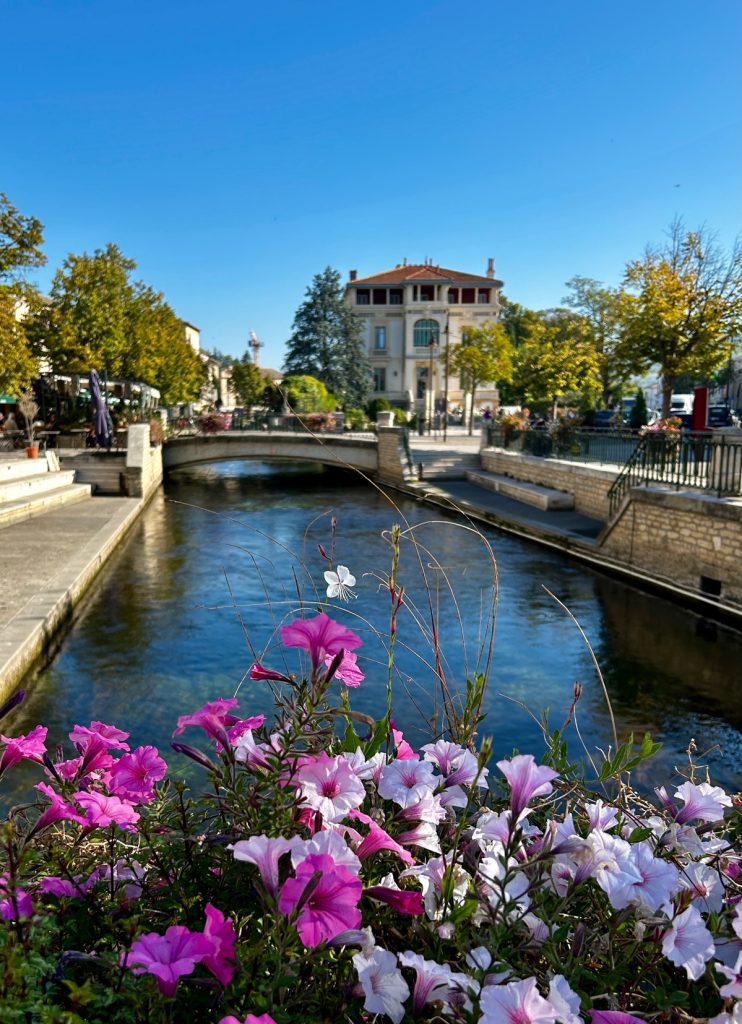
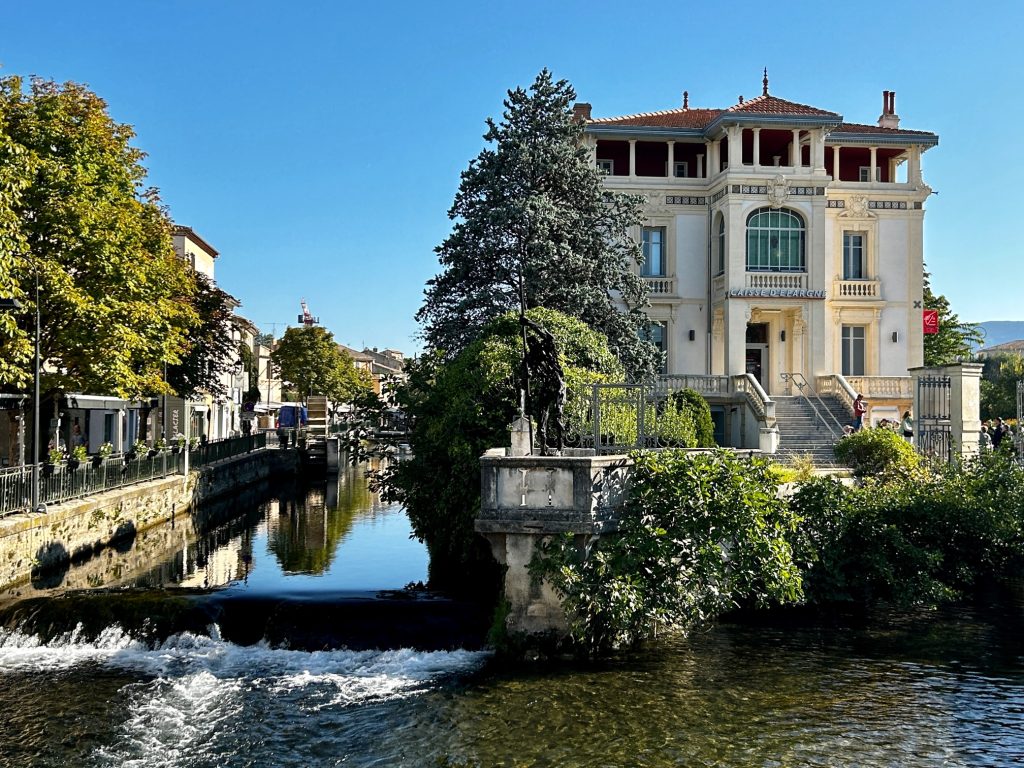
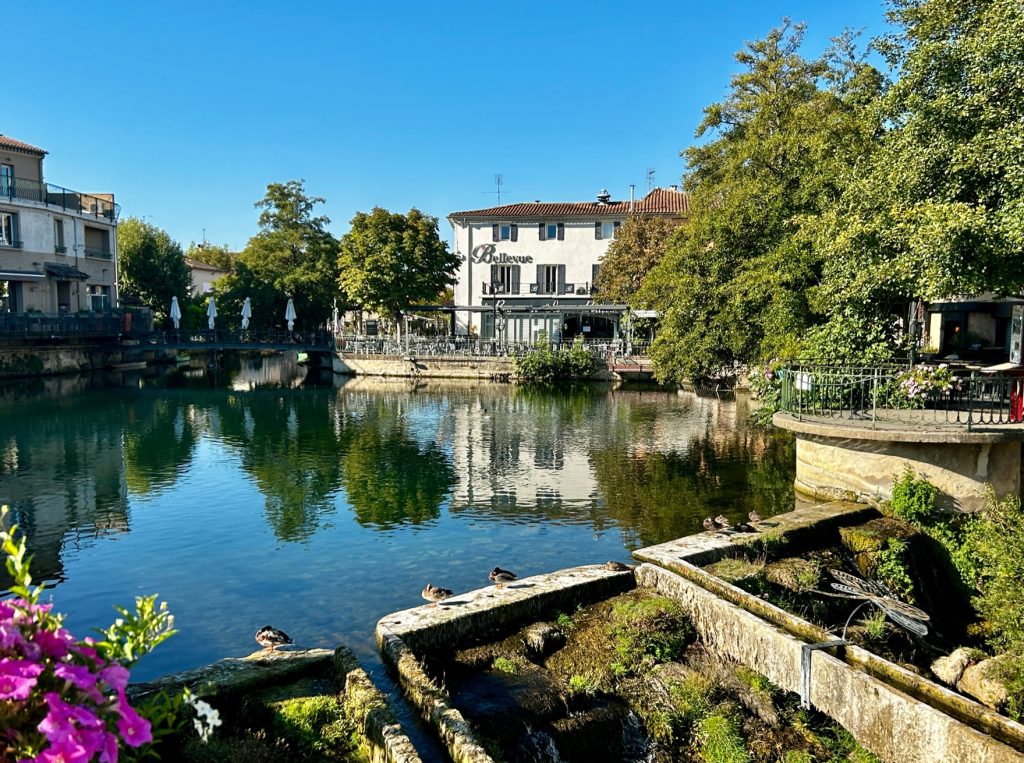
Talking of markets, L’Isle Sur La Sorgue is almost as famous for it’s farmers market as it’s antiques. They’re held every Thursday and Sunday morning and the latter market is enhanced by a brocante (flea market). Once or twice a year, in the summer, a floating market is also held on barges (known as nego-chins) on the River Sorgue but I’d need to check with the local tourist office for the precise dates. There were no markets on as I strolled the town.
Follow the Quai Rouget de L’Isle, the Quai Jean Jaures and the Quai Frederic Mistral and you will have walked the most interesting three sides of the four that surround the old town. Turn left into Rue du Docteur Tallet upon reaching the medieval washhouses on the Quai Frederic Mistral and you’ll soon reach the centre of the old town, Le Place de l’Eglise. Me, I retraced my steps to the Van to collect Vanya and the dogs. Vanya just had to see this place.
In no time I was back in the old town with Vanya and our dogs. The relatively silent narrow winding streets and lanes of the old town, together with their empty cobbled passages and courtyards, proved irresistible after the bustling, congested quays that line the Sorgue. They were shaded and cool and, at least until we reached the town centre and the town’s principal church (the Collegiale Notre Dame Des Anges), we somehow escaped the tourists.

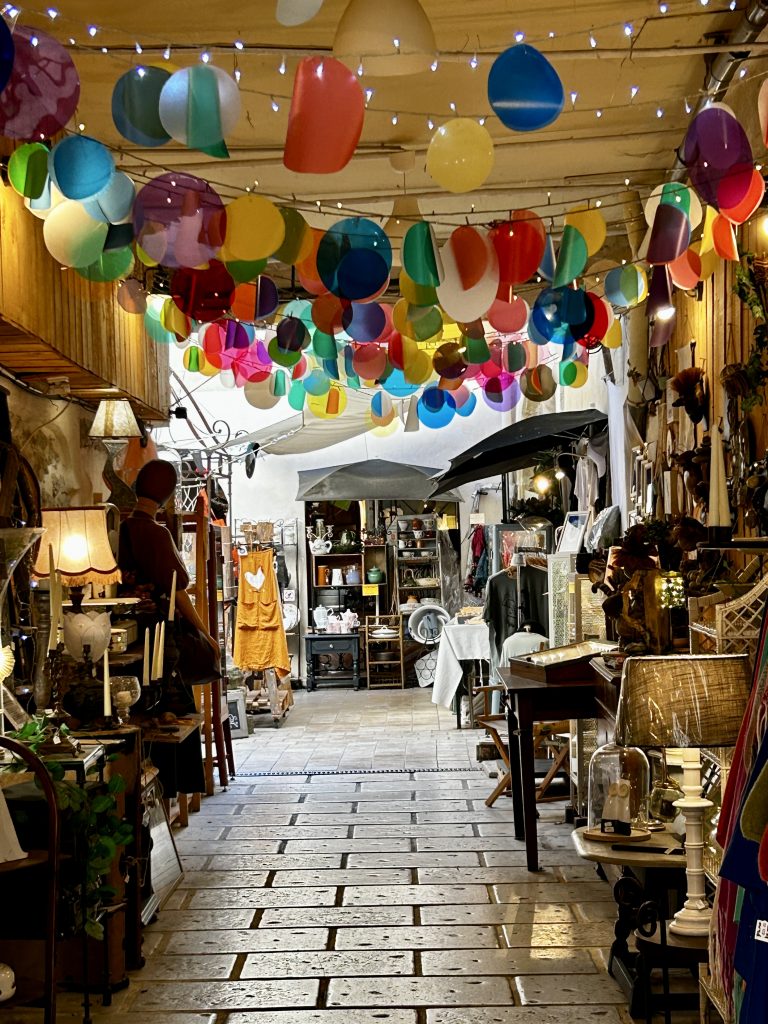

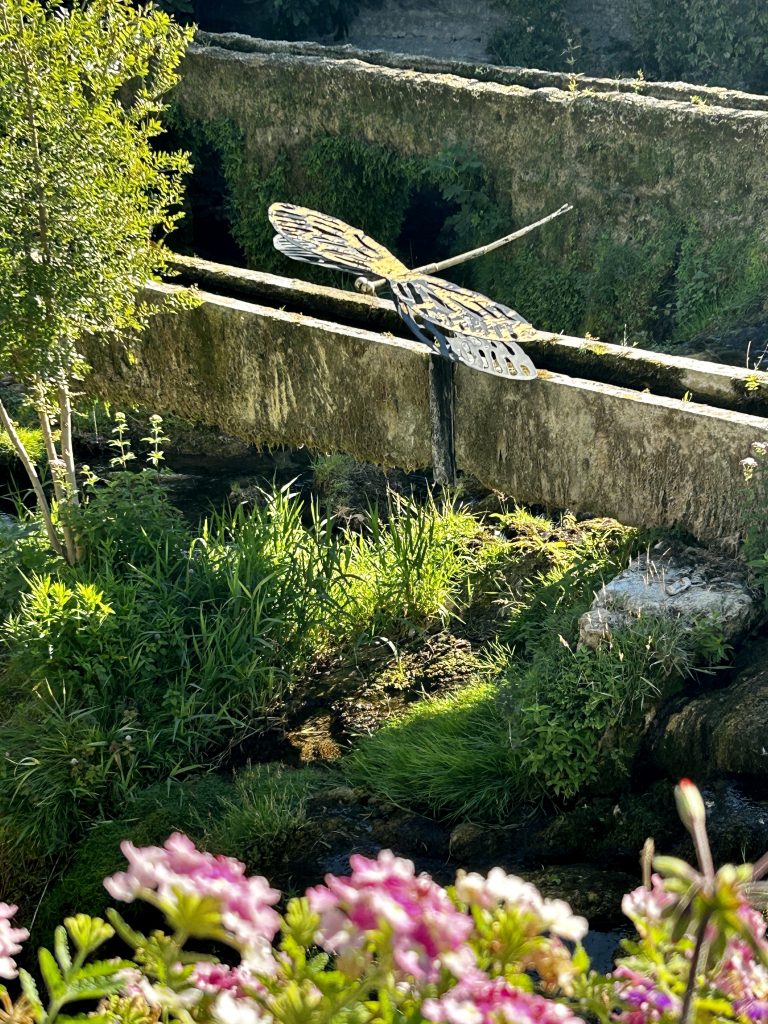
Waterwheels of many different sizes and designs, most dating back to the 18th century, are to be found throughout the town. The majority served to generate power for the spinning and weaving of wool and silk or the production of paper while others were used to crush olives or mill flower; all industries long since replaced by tourism in L’Isle de La Sorgue. A few are still in working order and I could happily stand and watch those wheels turning for ages but, even those that are now still and covered in moss are bewitchingly attractive.

On the central square at the heart of the old town stands the Collegiale Church of Notre Dame des Anges (Our Lady of Angels). The church was first built in 1212 in a Romanesque style although there is little if anything that remains of the Romanesque style now. It was almost totally rebuilt at the end of the 14th century and has since become a blend of Gothic and Baroque styles but, the inside is truly… spectacular? It is filled with grand vaulted ceilings, gilded statues, colourful paintings; it’s a mass of blue and gold. In truth, I was overwhelmed by it and there’s a part of me thinks it is over the top and perhaps a little gaudy but; it has to be seen.

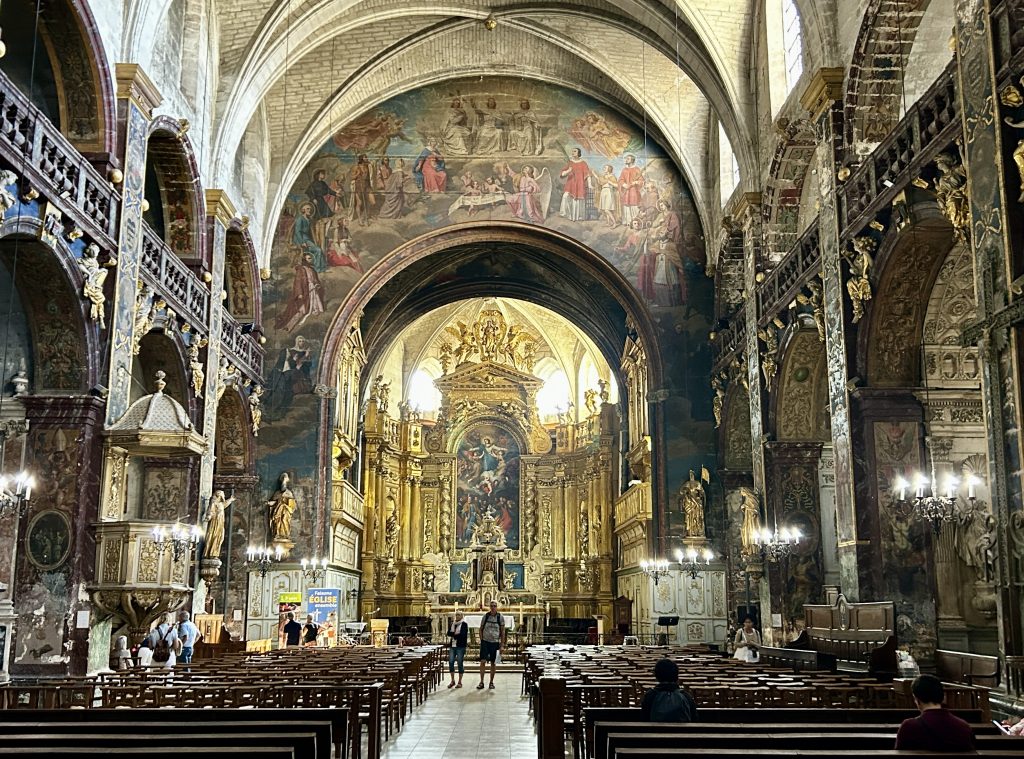
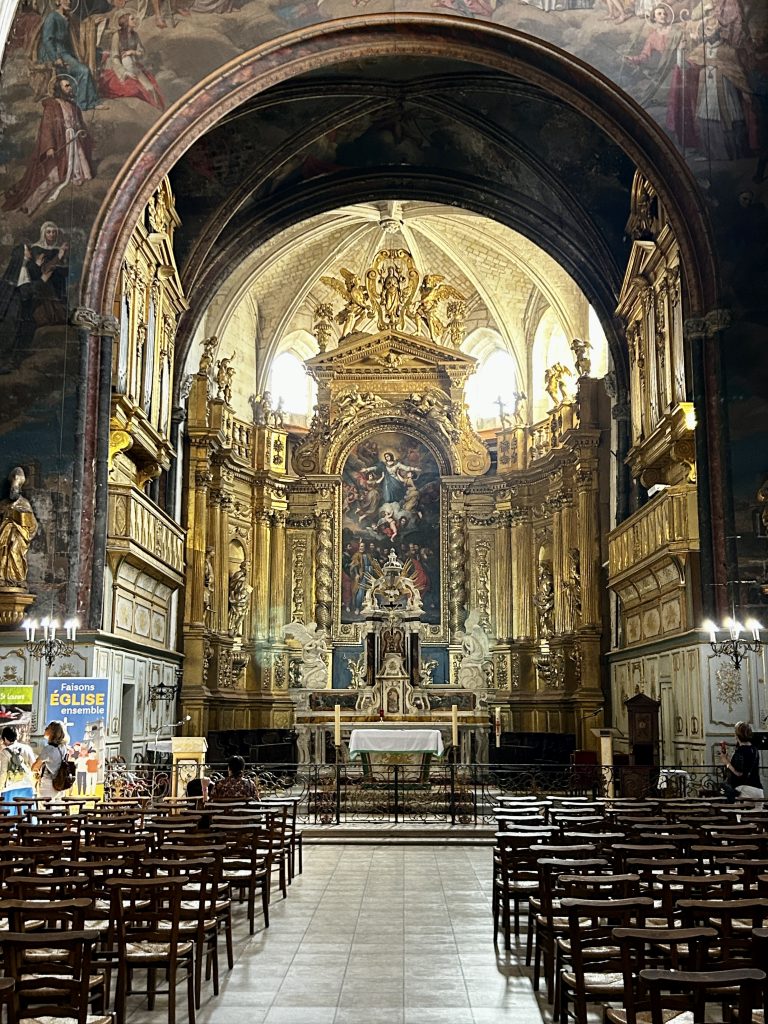
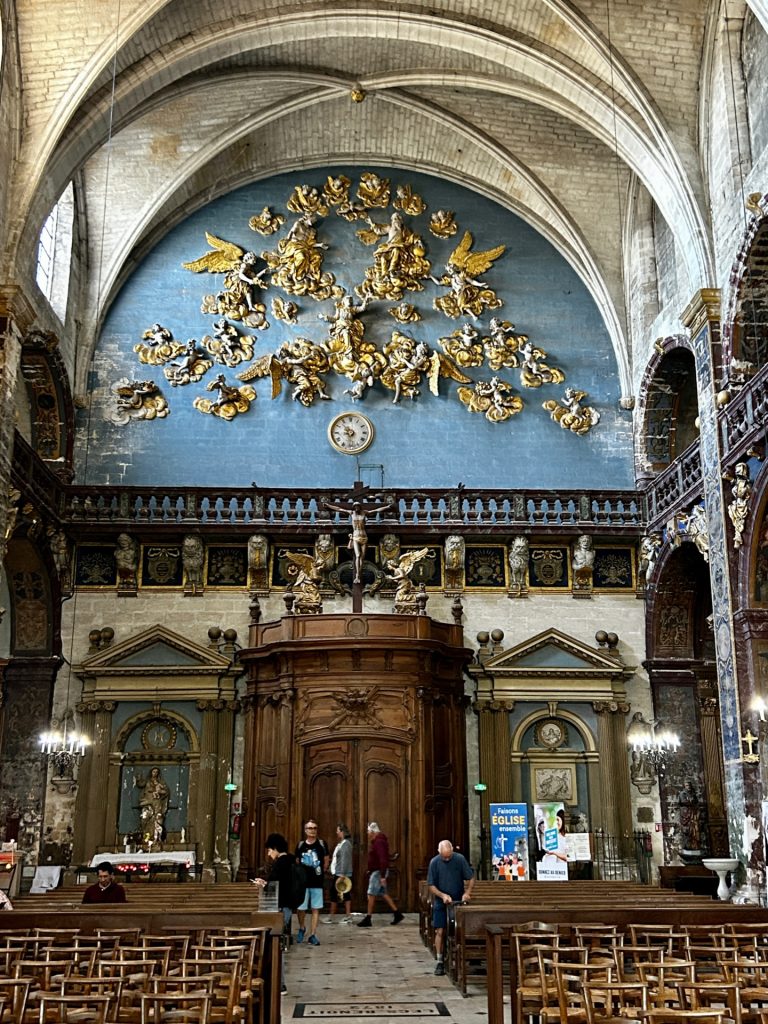
Just outside, on the same square, is another quite famous institution… the Cafe de France. If ever there was an Art Nouveau Coffee Shop, this is it. It is the oldest coffee shop in the town and the perfect place to enjoy a croque monsieur and people watch while planning your next move. Oh, and the town’s tourist office is also to be found on this square in the event you need help with the planning.
We left the square by the Rue Carnot and before too long were back at our starting point although we would have been a great deal quicker had Vanya not constantly paused to take photos of Beanie for her facebook posts…
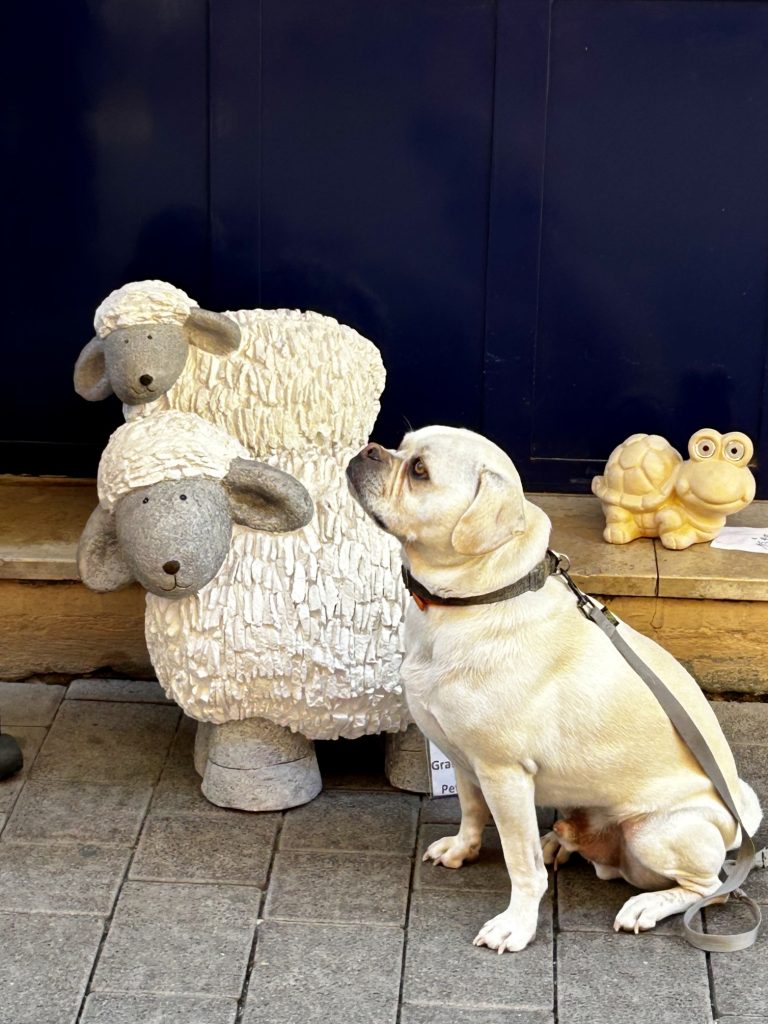
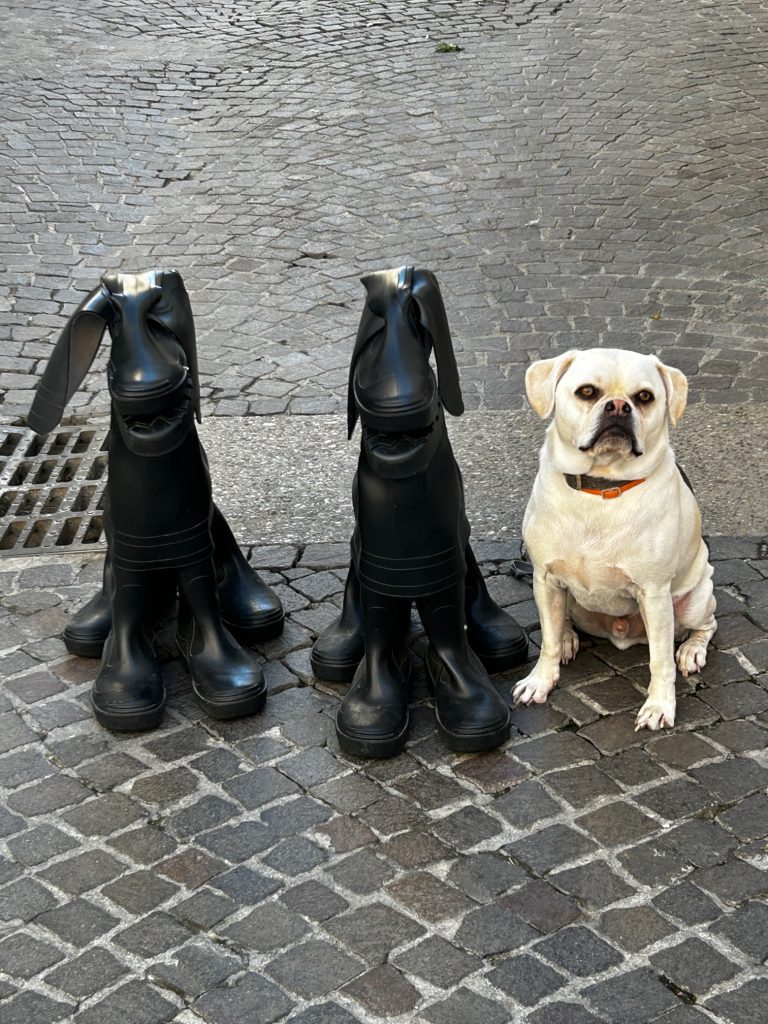
L’Isle Sur La Sorgue. Wherever we go next, this place will be a hard act to follow.

